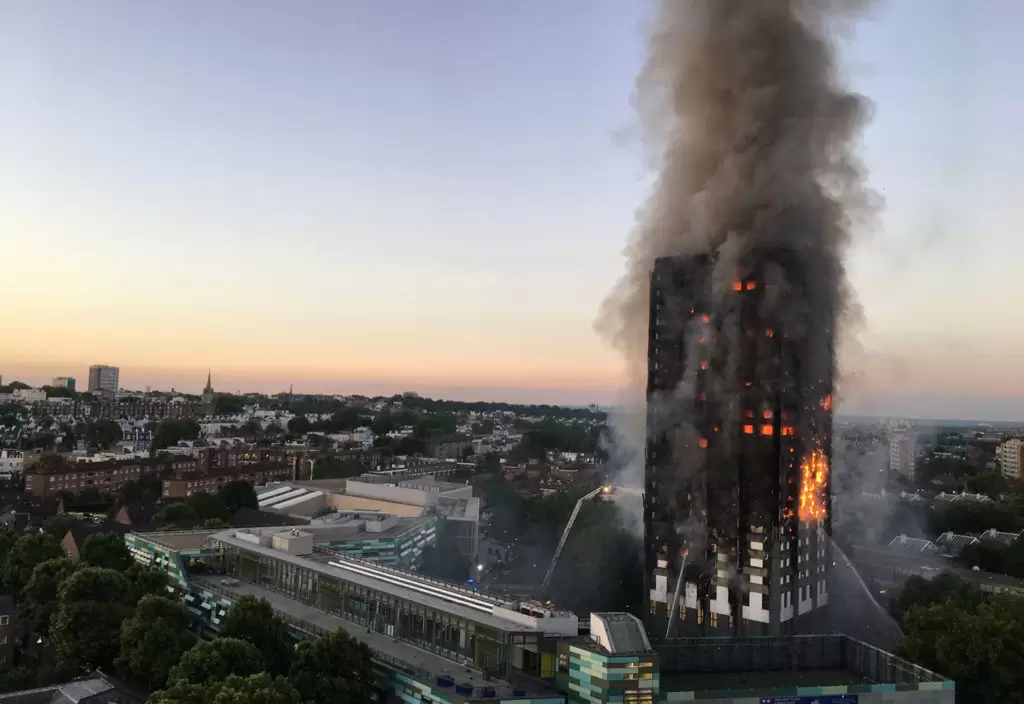Two years on from the Grenfell Tower fire, Australian states are facing an insurance crisis over combustible cladding.
As we mark the second anniversary of the Grenfell Tower fire, the Australian construction industry is facing a crisis, with building certifiers finding it difficult to secure professional indemnity insurance to assess buildings that could contain combustible cladding.
Dr Jonathan Barnett, Chair of Engineers Australia’s Society of Fire Safety, described the situation as a “disaster”, and said the consequences will flow on to others with a stake in the building industry – from engineers and other professions to consumers.
Cladding audits
In Australia, building regulation – including the identification of non-compliant combustible cladding – is governed by individual states and territories.
Victoria became the first Australian state to start auditing high-rise buildings for the presence of combustible cladding following the Lacrosse building fire in 2014.
A few years later, the Grenfell Tower tragedy in 2017 spurred Queensland, NSW, Tasmania, ACT and WA to put in place ongoing auditing processes. Queensland and NSW also require building owners to register buildings with combustible cladding.
Barnett told create that states are auditing buildings to identify combustible cladding, but lack of transparency is part of the reason insurers are unable to assess their exposure for professional indemnity insurance.
“We understand that Queensland is releasing details of the buildings deemed to contain flammable cladding, but that others are not,” Barnett added.
Bans are not the answer
In 2017, the Commonwealth Government rejected a blanket ban on imports of ACP, as it is legal when used in low-rise buildings and signage.
But at the last Building Ministers Forum in February, held shortly after the NEO200 high-rise apartment fire in Melbourne, ministers agreed in principle to a national ban on the unsafe use of combustible aluminium composite panels (ACPs), which were used in Grenfell Tower, in new buildings. They also proposed a permanent labelling scheme to make sure the panels are not substituted for other materials.
Last week, the Queensland Minister for Housing and Public Works Mic de Brenni proposed regulation to completely ban combustible cladding on all new Queensland buildings. The ban would extend to all composite panels with a PE core of greater than 30 per cent. NSW has also banned ACP where its core contains more than 30 per cent combustible polyethylene by mass, and WA has made moves to ban alternative or performance-based solutions that use combustible cladding.
According to Barnett, banning imports would not address the issue of polystyrene-based cladding, which is mostly produced in Australia. Barnett described bans as a “blunt instrument” that should only be applied as a temporary measure and with caution.
Engineers Australia National Manager of Public Affairs Jonathan Russell agreed. He added that extending the ban on alternative solutions to all building design work would be a catastrophe for the whole building sector, including engineers.
“Such a ban would stifle design ingenuity,” he said.
Russell also pointed out that Engineers Australia members had indicated that the majority of audited buildings classified as ‘high risk’ for fire safety had cladding that was applied without proper engineering design.
“Therefore, to say that performance-based solutions are the problem is unfair. If proper engineering design is applied to create a performance-based solution, the outcome will be high quality and safe,” he said.
Industry action
Industry has been working to find ways to help building owners and engineers deal with the cladding issue. Last year, the Insurance Council of Australia (ICA), in partnership with Engineers Australia, released a protocol to identify and report non-compliant cladding.
In February, Engineers Australia published the Society of Fire Safety Practice Guide for Façade/External Wall Fire Safety Design. Barnett said the practice guide provides a consistent framework for engineering assessments so they follow all the key elements to ensure consistent analysis and design in the rectification of non-compliant cladding in existing buildings.
Barnett added that one insurance underwriter requires engineers to use this practice note in order to obtain professional indemnity insurance.
In the short term, some states are instituting policies to bridge the insurance issue until a permanent solution can be found. Queensland’s proposed ban includes provisions for certifiers to remain licensed while they hold professional indemnity insurance with cladding-related exclusions. De Brenni said the regulation would pave the way for “certifiers to hold PI insurance with exclusions”, but this is a temporary solution to keep the construction industry moving for now.
NSW has also amended its Building Professionals Regulation to ensure building certifiers can continue to operate. Like many other states, NSW certifiers are required to hold professional indemnity insurance, without exclusions or conditions, as a pre-requisite for accreditation.
State Minister for Better Regulation and Innovation Kevin Anderson said after the Grenfell fire, the global insurance market has tightened. He called the amendment a “short-term, urgent action” to avoid a situation where the lack of insured certifiers “pulls a hand brake on building and construction in NSW”.
“In order to allow the Building Professional Board to accept professional indemnity insurance policies with conditions or exclusions, the NSW Government has removed the requirement that would otherwise make the policy con-compliant,” Anderson said in a statement.
He added that the change, which is in place for up to 12 months, does not affect the obligations of certifiers or compliance standards.
Russell said that Engineers Australia is glad to see that states such as NSW and Queensland are finding ways to prevent an immediate crisis, but other measures are needed in the long term to prevent the industry from coming to a halt. This includes industry reforms that reflect the changed landscape for professional indemnity insurance for certifiers and other building professionals, as well as a professional standards and registration scheme for certifiers.
These reforms will be topics of discussion at the Building Ministers Forum meeting later in July.
